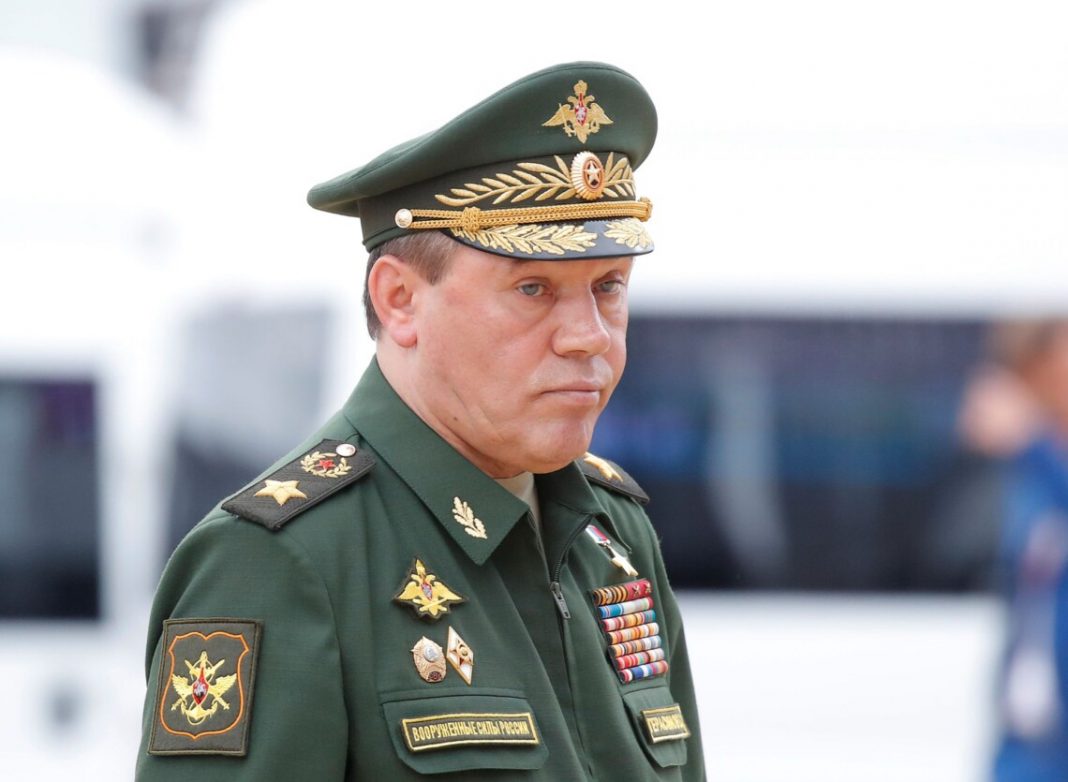Valery Vasilyevich Gerasimov was born on September 8, 1955, in Kazan. His roots are from a working family. In his interviews, Gerasimov likes to mention his grandfather, who fought during World War II, his uncle, a front-line soldier, and his mother, a “home front worker”. But surprisingly, he avoids mentioning his father.
He graduated from the Kazan Suvorov Military School (1971-1973) with honours, the Kazan Higher Tank Command School named after the Supreme Council of the Tatar ASSR (1973-1977) with a gold medal, the Military Academy of Armored Forces named after Marshal of the Soviet Union R. Ya. Malinovsky (1984-1987) with honours, Military Academy of the General Staff of the Armed Forces of the Russian Federation (1995-1997).
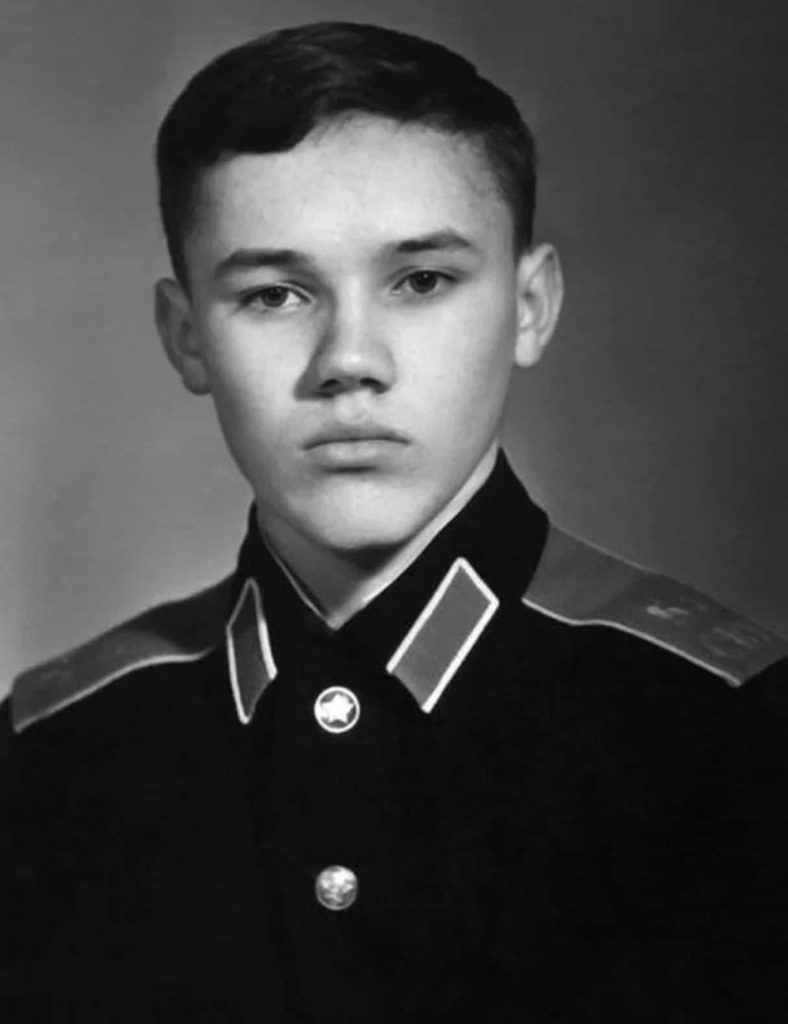
Since 1977, he has served as a platoon commander, company commander and battalion chief of staff in the 80th Tank Regiment of the 90th Guards Tank Division of the Northern Group of Forces in Poland (Borne-Sulinove). From 1982 to 1984, he was a battalion chief of staff and battalion commander of the 29th motorized rifle division in the Far Eastern Military District (Troitskoye village, Primorsky Territory). After graduating from the academy, in 1987, he served as chief of staff – deputy commander of a tank regiment, commander of a tank regiment, chief of staff – deputy commander. Later, since 1993 – as a commander of the 144th Guards Motorized Rifle Division in the Baltic Military District and the North-Western Group of Forces. In August 1994, he withdrew the division to the Moscow Military District (the city of Yelnya). Since 1995 he has studied at the academy.
In March 2001, the Krasnaya Zvezda newspaper wrote: “As a child, he firmly decided to become a military man. Interest in the army was awakened by the stories of an uncle who was a front-line soldier and a former tank company commander. As a boy, he read books by Konstantin Simonov. Today, the general recalls with a smile how, after the fourth grade, his father sent his documents to the Kazan Suvorov Military School. And at that very time, the school were shifting to a two-year education. Four years of waiting, however, only strengthened the teenager’s desire to achieve his goal. After graduating with honours from Suvorov, later – an armor school with a gold medal, the young officer began his service in the Northern Group of Forces. Then fate threw him to the Far East. The desire to constantly improve, not stop there, prompted the commander of a tank battalion to enter the Military Academy of Armored Forces. Marshal of the Soviet Union R.Ya. Malinovsky. In 1987, after graduating from the academy with honours, Valery Gerasimov ended up serving in the Baltic Military District. Here he went through the next steps of becoming a commander: from the chief of staff of the regiment to the commander of a motorized rifle division. The matter was going to the collapse of the Union. These were not the best years for the Armed Forces. Gerasimov had to make incredible efforts to withdraw the unit to the Smolensk region in 1994 painlessly – one might say, to an empty place. The high organizational skills of Colonel Gerasimov were appreciated by the then Minister of Defense of the country. It was decided to send the officer to study at the Academy of the General Staff. He graduated from this educational institution with honours.”
Since 1997, Gerasimov served as First Deputy Commander of the 1st Guards Tank Army in the Moscow Military District (1997-1998), since February 1998 as Chief of Staff – Deputy Commander (General Vladimir Shamanov), and since February 2001 as Commander of the 58th Combined Arms Army in the North -Caucasian military district. Since August 1999, units of the army have been conducting large-scale military operations during the Second Chechen War.
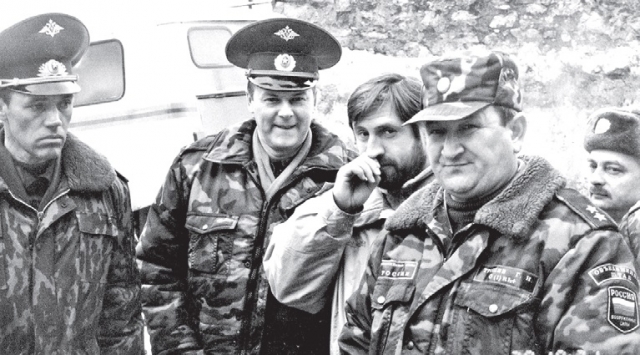
Gerasimov recalled: “Then, in Dagestan, there was the most difficult situation. I was everywhere; I knew in detail what was happening on the administrative border with Chechnya, where our platoon strongholds stood. No one had any illusions: the Chechen abscess would eventually burst.”
The Krasnaya Zvezda newspaper wrote: “Situations arose, one might say, and supercritical. Bandits armed to the teeth turned Bamut into an impregnable fortress: they actively used the mines of the former division of the Strategic Missile Forces, dug underground passages to residential buildings, and created additional shelters from artillery strikes in concrete cellars. The mountainous terrain, covered with greenery, also played into the hands of the militants. Major General Valery Gerasimov was instructed to direct the actions of our troops in the Bamut direction. While working on the ground, an armoured group led by Valery Vasilyevich was ambushed. The column was fired at point-blank range with small arms and grenade launchers. The group immediately dismounted and took the fight. They fought off the attacking militants without losing control until the helicopters arrived[…]. But, of course, they did not remain indebted to the bandits. A week later, the mercenaries were lured into a well-rigged trap. As a result, more than a dozen bearded men were killed, and a large batch of small arms was seized. In those days, Gerasimov did not know about rest and sleep. The result of exhausting work was the capture of Maly Bamut without combat. On the same day, we met at the division’s command post. The cold autumn rain poured down. Valery Vasilyevich looked exhausted, but I persistently tried to get him to talk. “For the militants,” the general said wearily, “today’s operation is a complete surprise. We planned everything carefully. Intelligence and artillery did a good job. Therefore, there were no losses.” Today, analysing the situation near Bamut, Valery Vasilyevich believes that the military operations only began to correspond to the required quality level at that time.
Ukrainian analyst Maria Kucherenko writes in Delovaya Stolitsa: “It is characteristic that this sketch interview was taken from Gerasimov in 2001 as a general of the Second Chechen War, whose direct responsibility was the battles for Komsomolskoye (March 2000), about which he talks about his big achievement. The battle for Komsomolskoye is the emphasised battle of both the Second Chechen War and the first election of Vladimir Putin. The “victory”, which consisted in turning this settlement into ruins, had to be presented for the election of a new head of state, who positioned himself as an outstanding fighter against terrorism. And no one, including Gerasimov, who led the operation, was worried that its declared goal, the destruction of the militants and their leader Ruslan Gelayev, had not been achieved. For the panegyric, only Gerasimov’s words about the courage of his subordinates and that the attempts of the militants to break through the encirclement of federal troops were in vain were chosen. But in this formal interview, Gerasimov lies about the fate of the civilians who allegedly left the village. At the beginning of the hostilities for Komsomolskoye, the federals did not allow the civilian population to leave immediately and kept them in an open field for several days, including women and children. Gerasimov is not interested in these people; he regretfully focuses only on the losses among the Russian military and says that “war is war. We must try to fight in such a way as to eliminate failures. To do this, you must train troops in peacetime, provide them with everything they need, and not wait until something happens.”
Obviously, this episode is the starting point for a further revision of the methods of warfare: Gerasimov was aware that during the Second Chechen War, mistakes that led to unjustified losses among the personnel were made.
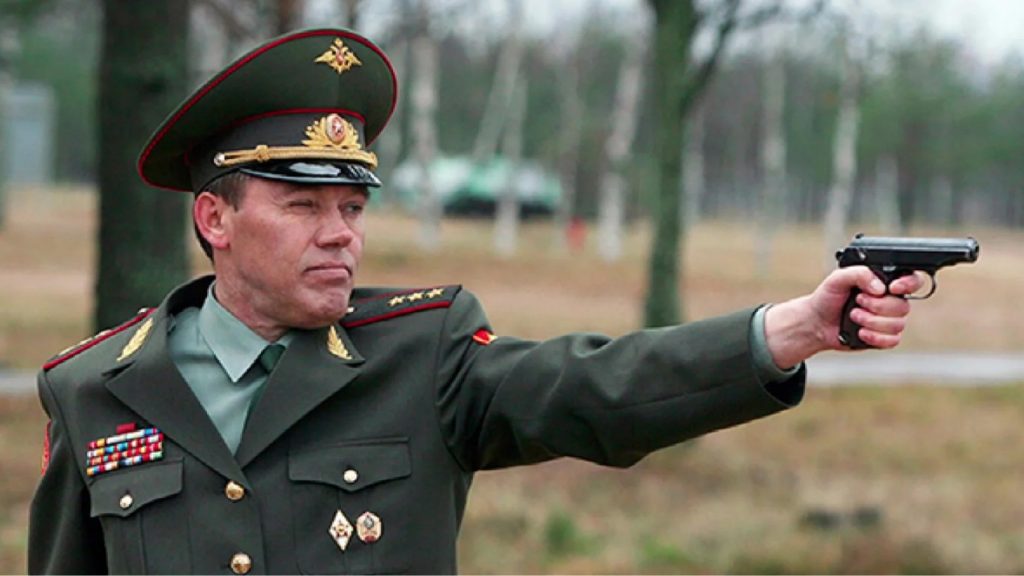
In February 2002, Gerasimov was promoted to the rank of lieutenant general and was awarded the Order of Merit for the Fatherland, IV degree with swords.
Since March 2003, Gerasimov has served as chief of staff of the Far Eastern Military District, since April 2005 – head of the Main Directorate of Combat Training and Service of the Armed Forces (with the rank of Colonel General). In December 2006, he assumed the post of Chief of Staff of the North Caucasian Military District.
From December 11, 2007, to February 5, 2009 – Commander of the Leningrad Military District; from February 5, 2009, to December 23, 2010 – Commander of the Moscow Military District.
On December 23, 2010, he was appointed the Deputy Chief of the General Staff of the Armed Forces of the Russian Federation. After that, however, he was removed from this position after confronting Chief of the General Staff Nikolai Makarov. Still, five months later, he returned to replace him as head of the General Staff: on April 26, 2012, Valery Gerasimov was appointed to the position of commander of the Central Military District, and on November 9, 2012, Russian Defense Minister Sergei Shoigu presented President Vladimir Putin with the commander of the Central Military District, Valery Gerasimov, as the new Chief of the General Staff of the Russian Armed Forces instead of Makarov.
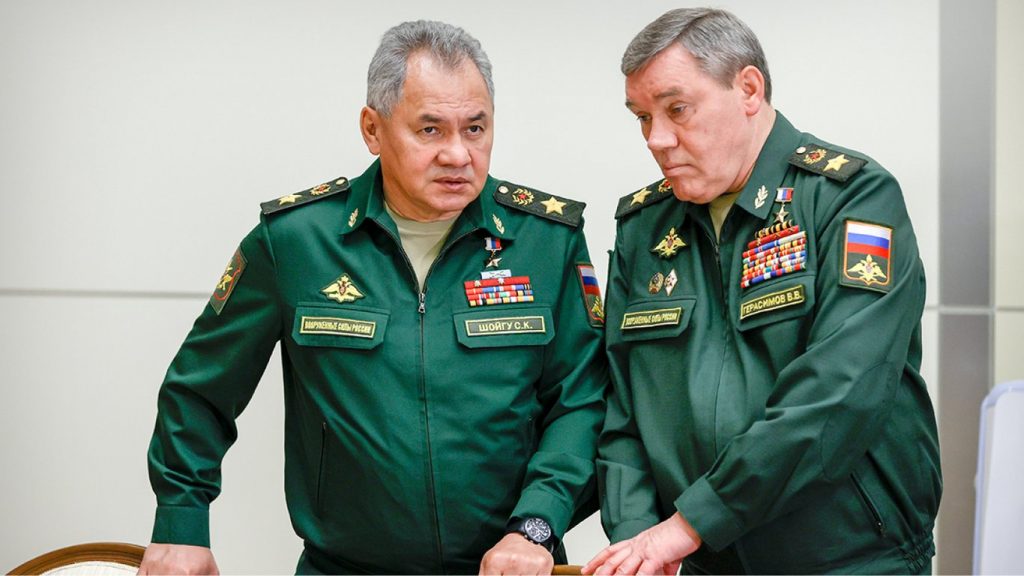
At a meeting with the President, Valery Gerasimov said: “I believe that all the activities of the General Staff should be aimed at achieving one main goal – maintaining the combat capability of the Armed Forces in such a state that guarantees the fulfilment of all the tasks assigned to the Armed Forces. And I will do everything in my power to achieve this goal.”
On November 9, 2012, he was appointed by Russian President Vladimir Putin to the post of Chief of the General Staff of the Armed Forces of the Russian Federation – First Deputy Minister of Defense of the Russian Federation.
Since November 13, 2012, he has been a member of the Security Council of the Russian Federation. Valery Gerasimov is the acting Minister of Defense of the Russian Federation during the absence of Sergei Shoigu, Defense Minister General of the Army.
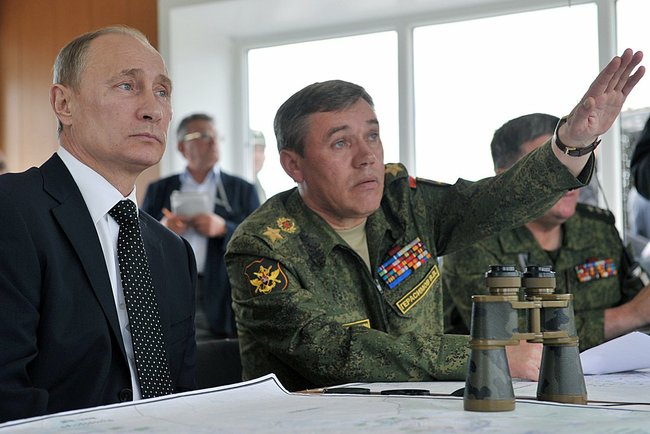
Soon after taking the post of chief of the Russian General Staff, Gerasimov put forward his vision of the military-political strategy. In January 2013, he delivered a report to the general meeting of the Academy of Military Sciences on the topic “The main trends in the development of forms and methods of using the Armed Forces, the urgent tasks of military science to improve them.” In February 2013, he published most of this report in the Russian newspaper “Military Industrial Courier” under the title “The value of science is in foresight.”
“Asymmetric actions have become widespread … These include the use of special operations forces and internal opposition to create a permanent front throughout the territory of the opposing state, as well as informational influence, the forms and methods of which are constantly being improved” Gerasimov argued in his article.
In the article and report, Gerasimov analyses the events of the “Arab Spring”, the actions of the United States during the “Desert Storm”, the activities of the Russian Federation itself during the “peace enforcement operation in Georgia”, and postulates that the emphasis should shift towards the use of non-military measures: political, informational, economic and humanitarian (the ratio of non-military and military actions is 4-to-1).
The doctrine gained wide international fame after Russia’s subsequent actions concerning Ukraine coincided with its theses. The description of the hybrid war, which includes “political, economic, informational, humanitarian and other non-military measures”, was fully embodied in the course of the armed aggression of the Russian Federation against Ukraine. “Remote non-contact impact on the enemy is becoming the main way to achieve the goals of the battle and the operation,” Gerasimov states in his article, “Covert military measures, including the implementation of information warfare measures and the actions of special operations forces complement all this.” However, the doctrine does not specify whether these “information warfare” activities are military or non-military.
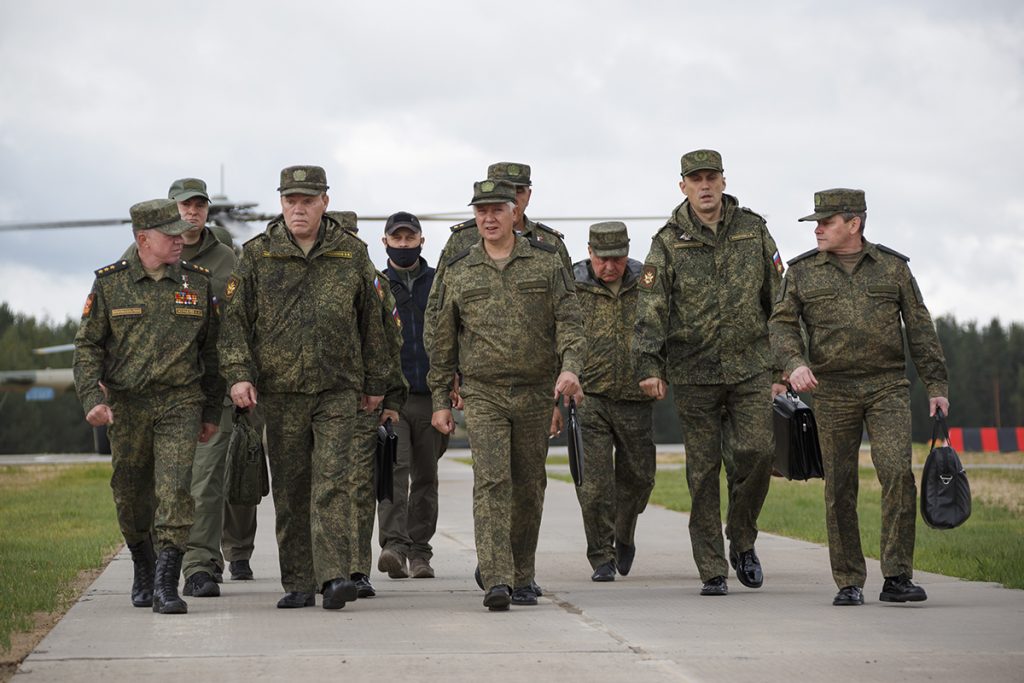
With the light hand of the researcher Mark Galeotti, the media started talking about the “Gerasimov doctrine” almost as a Russian “vision of total war”, which contributed to an inevitable demonisation of the Chief of the General Staff of the Russian Federation. However, Galeotti later claimed that this was just a “beautiful term” with which he designated Gerasimov’s report.
One of the researchers correctly remarks: “If you look more closely at Gerasimov’s article, you can see that it is not about the “war of the future”. On the contrary, this is a text that proves that in Russia, the desire for historical reconstruction (the creation of an image of a possible past) and the desire to present it with something decidedly new have been elevated to the absolute. The dominance of non-military methods of influence over the military is far from a new concept that was involved even before the era of totality.
On February 20, 2013, Gerasimov was awarded the rank of Army General.
Valery Gerasimov is the Chairman of the Interdepartmental Commission for the State Prize named after Marshal G.K. Zhukov.
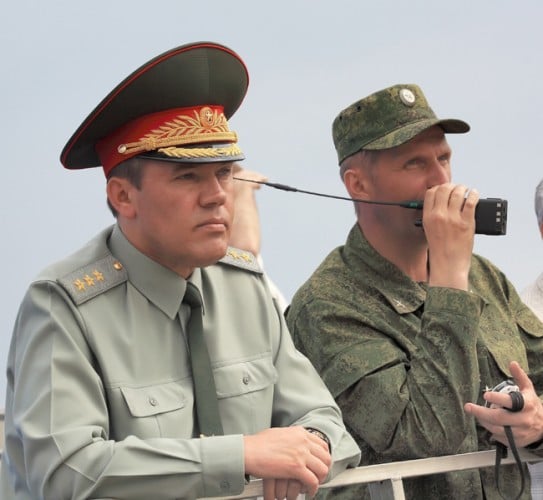
Valery Gerasimov participated in the organisation and development of plans for the Russian invasion of Crimea and Donbas, as a result of which he was included in the sanctions lists of the European Union, the United States and Canada. In addition, the Bellingcat investigative team lists Gerasimov as one of the Russians responsible for transporting the Buk air defence system to pro-Russian militant-occupied Donbas and launching the missile that downed Boeing 777 flight MH17 on July 17, 2014.
According to Ukraine’s military prosecutor’s office, Valery Gerasimov is considered the main ideologist for unleashing the conflict in Donbas. “The decision on the war in Ukraine was made personally by the Chief of the General Staff of the Russian Federation, Gerasimov,” said the former military prosecutor of Ukraine, Anatoly Matios. Furthermore, the former head of the SBU investigative department, Hryhoriy Ostafiychuk, said that Valery Gerasimov was personally attending in the occupied territory of Ukraine during the Battle of Ilovaisk. As a result, the Shevchenkivskyy Rayon Court of Kyiv decided to arrest Valery Gerasimov and ten other high-ranking Russian servicemen in absentia.
In turn, the Ministry of Defense of the Russian Federation stated that the decision of the Ukrainian authorities to search for and arrest Valery Gerasimov and other Russian military men in absentia was political and provocative, and the Security Service of Ukraine itself was called a “reserve of idiocy” in this regard.
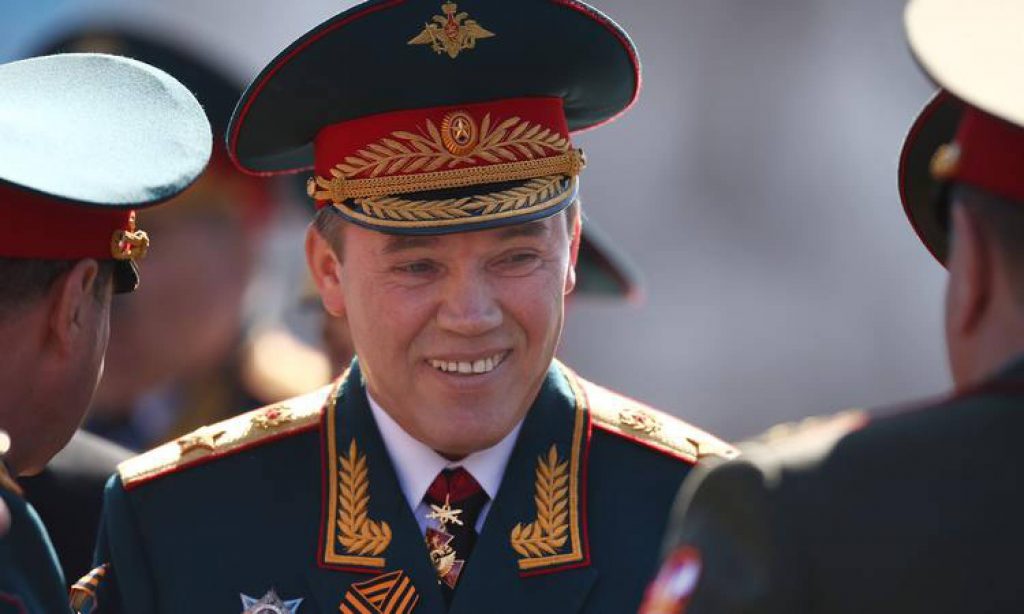
He is the organiser of the Russian military operation in Syria launched in September 2015. For courage and heroism demonstrated in the performance of military duty, in May 2016, by a closed decree of the President of Russia, he was awarded the highest state award – the title of Hero of the Russian Federation. In 2015 and 2017, Gerasimov was awarded the Order of St. George, and in 2020, the Order of Alexander Nevsky.
According to Amnesty International, in late February 2016, Russian warplanes deliberately targeted civilians and rescuers. By the end of 2018, the Airwars organisation, which tracks reports of air strike casualties in the United States and Russia, recorded between 2,730 and 3,866 civilian deaths in Syria from approximately 39,000 Russian airstrikes, including between 690 and 844 children.
Valery Gerasimov is included in the report “1500 warmongers”, compiled by the Free Russia Forum. The report contains the names of Russian public figures, military leaders, deputies, propagandists, artists and athletes who have publicly spoken out in support of Putin’s aggression or are directly involved in it. The Free Russia Forum is seeking sanctions against them in the European Union.
On February 26, 2022, the White House imposed new sanctions against top Russian officials involved in the full-scale Russian invasion of Ukraine. Gerasimov was included in the list along with Shoigu and members of the Russian Security Council.
In mid-March 2022, Dr Peter Leighton, who works closely with the UK’s Royal Joint Defense and Security Research Institute RUSI, published an article titled “Gen. Valeriy Gerasimov’s Big Ukrainian Trouble”.
In it, he mentions the “Gerasimov Doctrine”. Under the Gerasimov plan, Russia uses social media and covert interference to turn the population of countries against its government, uses economic measures to make those countries poor, and resorts to diplomatic pressure to limit the circle of friends of the enemy. Finally, after such a long process, Russia goes on the offensive with small forces, inspiring the local population to a coup to bring its henchman to power.
Layton wrote that, theoretically, it looks beautiful, but in reality, all of Gerasimov’s high-profile ideas for regime change collapsed entirely during the Russian attack on Ukraine. The Russian “fifth columns” inside Ukraine were quickly disarmed, a special ops amphibious assault on the Gostomel airfield near Kyiv failed, the Russian army was halted, and Ukraine became more united and determined.
“Gerasimov, with his active defence doctrine, has led the Russian army into a large-scale offensive operation in Ukraine, which highly motivated soldiers defend,” Layton wrote.
Leighton also noted that the Russian army today is not designed to fight in such an invasion format since it lacks the will to fight; it is small and poorly equipped. As a result – the wrong war, the wrong army, and the wrong time. But it still creates problems for Ukraine.
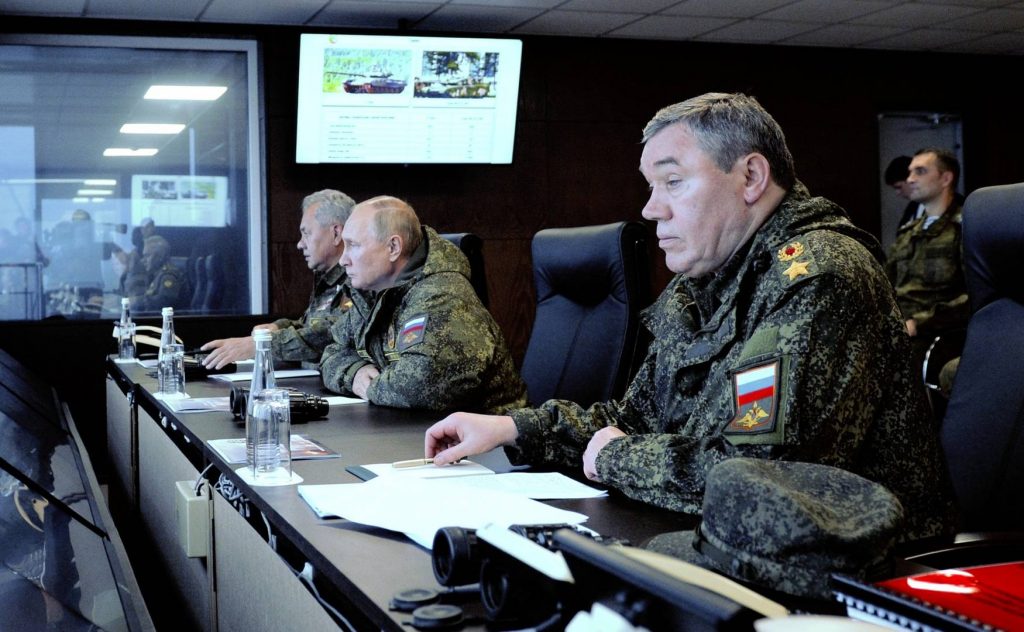
Maria Kucherenko writes: “Gerasimov is one of the few important figures in the period of the Chechen wars who did not die under strange circumstances. And it seems that the description of his actions and views answers why: Gerasimov’s loyalty to the regime and its ideological metamorphoses is not learned and not artificial, but organic. To engage in reconstruction (that is, to create an image of a possible, not a real past), to combine the incompatible, to lie and manipulate, not to pay attention to the lives and destinies of civilians – this is the true doctrine that Gerasimov professes. However, even in this case, he is only a fairly successful practitioner but by no means an outstanding theoretician”.
On April 30, 2022, information appeared in Ukrainian and some Western publications, first about the death and then about the injury of Gerasimov during an inspection trip of the forces of the “Special Military Operation” of the Russian Federation in the Kharkiv Oblast. The former head of the Ministry of Internal Affairs of Ukraine, Arsen Avakov, said that we are talking about a shrapnel wound to the right lower leg without a bone fracture, as well as the death of Gerasimov’s personal guard. Later this information was not confirmed. On April 30, Gerasimov visited school No. 12 in Izyum in person, where the command post of the 2nd Combined Arms Army of Russia and the Russian airborne troops was located. In the evening of the same day, the Ukrainian army attacked the school, but Gerasimov had already left the facility and was on his way back to Russia.
In the military, Gerasimov is considered an ascetic who is used to living without the luxury inherent in most generals. However, as the “Nastoyashcheye Vremya” periodical discovered, the head of the Russian General Staff, Valery Gerasimov, owns an apartment in a business-class residential complex and a country house in a gated community. The total value of the real estate is estimated at 100 to 150 million rubles. “This is very modest compared to the property of Shoigu and his other deputies, but still a multiple of the official income of the head of the General Staff,” the authors of the article note.
Gerasimov’s income statement also does not impress with luxury. Over the past ten years, the total income of Gerasimov and his wife amounted to a little less than 31 million rubles. Recently, the head of the General Staff reported an annual income of just under 6 million, and before that, he earned about 3 million rubles a year. The yearly income of the general’s wife did not exceed 200 thousand rubles.
His family has an apartment in the Khoroshevsky district of Moscow, in the same place where the headquarters of the Main Directorate of the General Staff is located. Housing in building 14 on Aviaconstructor Mikoyan Street, with an area of 131 sq. meters in 2013, was allocated to the wife of the “chief strategist of the Russian army.” Later, the property owner was hidden, which is quite typical for high-ranking Russian officials.
The suburban housing of the Gerasimovs is located 30 km from the Moscow Ring Road in the “strictly guarded cottage village” of Afineevo. Real estate in this village is inferior in value to the towns on Rublevsky Highway several times: for a house of 200-300 sq. meters and a plot of 15 acres, ask for an average of 39 million rubles. But there is an offer for 135 million rubles – it is precisely such a house and a plot that are closest in the area to Gerasimov’s dacha.
The property of the first deputy Shoigu is 21 acres of land, and a house with an area of 554 square meters was built on the site and a bath in 236.3 sq. meters, as follows from the data of the Rosreestr (Russian Register).
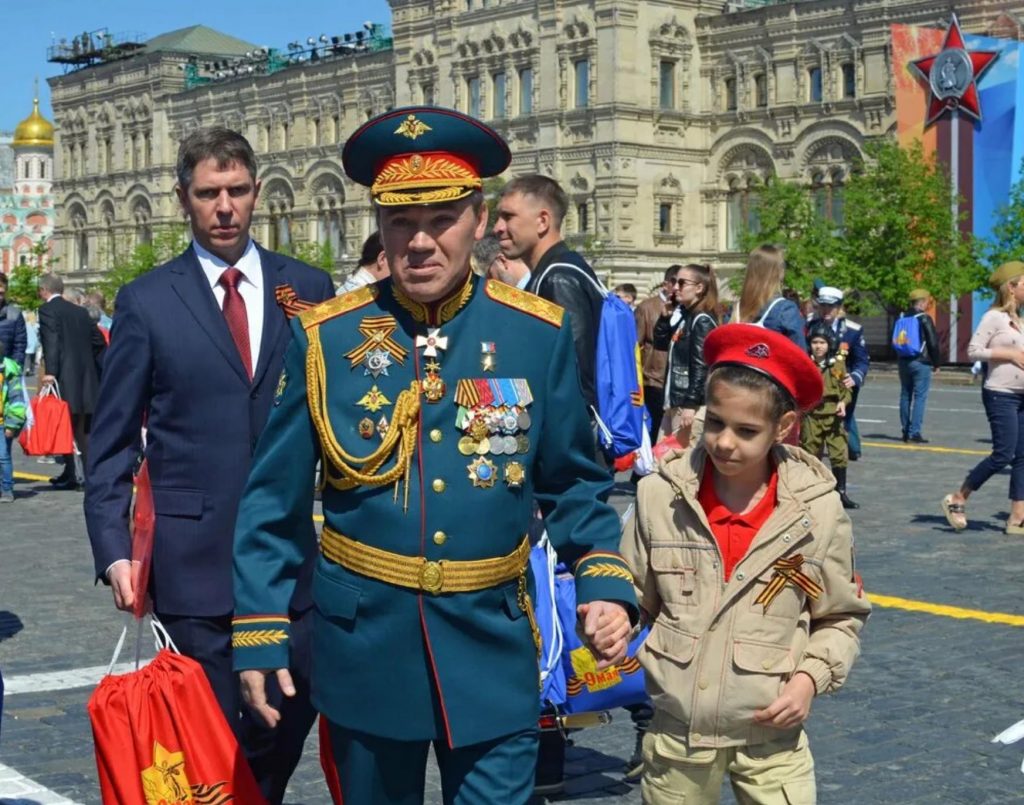
Gerasimov is married (he met his wife while studying at a military school and started a family early). Two children grew up in the family – a son and a daughter. The son is a militarian, while open sources do not mention the detailed bio about the daughter.

